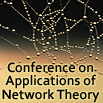Speaker
Dr
Verónica Ramenzoni
(Max-Planck-Institute for the Psycholinguistics)
Description
In recent years, research in the field of social
interactions has focused on the exploration of the
coordinative structures that substantiate joint task
performance. Coordinative structures or synergies refer to
online the soft-assembly of neuromuscular elements that
function as a collective unit. Synergies exploit neuromotor
redundancies to provide multiple, equivalent motor solutions
while also providing stability via reciprocal compensations
for unwanted perturbations and fluctuations. It has been
proposed that synergies can exist at the interpersonal scale
as well as at the scale of an individual actor’ s neuromotor
system. This project proposes a novel methodological
approach for quantifying how synergies at the interpersonal
and intrapersonal scales respond to changes in task
constraints in the context of a joint performance. Principal
component analysis (PCA) is used to identify relevant
interpersonal and intrapersonal coordinative modes for the
single and joint performance, and cross-recurrence
quantification analysis (CRQA) was combined with PCA in
order to quantify the degree and stability of interpersonal
coordination across intrapersonal coordinative modes. The
composition and number of coordinative modes varied for
joint compared to single performance, and that interpersonal
coordination across the first coordinative mode increased in
degree and stability for joint compared to single
performance. Overall, these findings indicate that joint
coordinative structures are affected by the nature of the
task performed and the constraints it places on joint and
individual performance.

